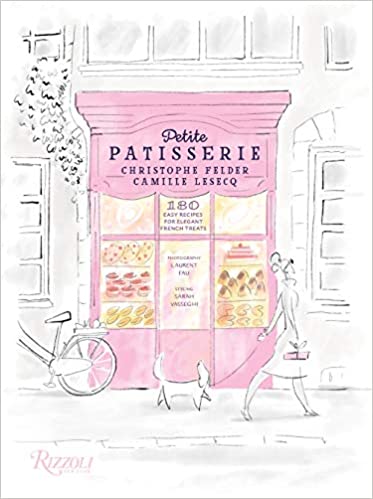Array
(
[0] => Array
(
[item_type] => email
[content] => Array
(
[label] => email
[email_address] => digitalMAG@iammicki.com
)
)
)
?>
Whether you’re a master chef or still working on perfecting pancakes, having the right tools in the kitchen can dramatically improve your experience. Like any craft, good tools can help you create the best possible end product, and you’d be amazed by how much time and effort you can save with the proper arsenal of devices by your side.
Consider the list below to help you improve your skills in the kitchen. As a bonus, these items will also make for fantastic gifts this holiday season!
Cookware
A good set of high-quality cookware is one of the most important investments you can make for your kitchen. These tools are some of the best options to get you started.
Cast-iron skillet
If you’re intimidated by the thought of cooking with cast iron, never fear. Cast-iron skillets are fantastic pieces of equipment to own. They can be heated to extremely high temperatures, which makes them perfect for searing meat, and they are far more durable than the average ceramic pan. The Field Company has a line of highly rated skillets (all produced in the United States) that range in price from $76–$215.
Dutch oven
Cooking for a crowd? A Dutch oven is a versatile tool you can use to prepare a wide variety of dishes, from stews to soups to roasts. It’s a great alternative to the electric slow cooker, as it allows for browning and slow-roasting meats all in the same pot. Le Creuset Dutch ovens have been a favorite for decades; however, in 2021, Food & Wine gave the more affordable Lodge enameled round Dutch oven top marks.
Stainless-steel saucepots
Saucepots are among the most frequently used items in the kitchen. You can use them for melting, boiling, sautéing, and a host of other preparation needs. While you can find pots in a handful of different materials, stainless steel is your best bet for durability and even heat distribution. Good Housekeeping rated the Anolon 12-piece stainless-steel cookware set the best option for beginners.
Utensils
Proper cooking utensils are critical for food preparation as well as kitchen safety. The following items are must-haves for anyone who wants to save time and create high-quality dishes.
Knife set
Although investing in ultra-sharp knives might sound like an accident waiting to happen for inexperienced cooks, sharper knives can actually help prevent accidents—dull knives make it harder to cut through tough veggies and meats, meaning the blade is more likely to slip. The knife set you choose should have a chef’s knife, a serrated knife, and a utility knife—like this top-rated set from Wüsthof.
Wooden utensil set
There’s a reason your grandmother preferred her wooden spoon to a plastic one. While wood can wear over time and is more likely to absorb food odors, it’s gentler on pots and pans than metal or hard-plastic utensils. You’ll need a few different kinds of utensils to tackle different jobs in the kitchen, but it’s good to start with the basics: a slotted spoon, a flat spatula, and a curved spatula. This olive-wood set from Tramanto is a fan favorite on Amazon for its aesthetically pleasing look and its sturdiness.
Cutting boards
You should consider investing in different cutting boards for different uses. For example, reserve one cutting board for cutting meats and another for cutting produce to prevent cross-contamination. Cutting boards not only protect your countertops but also make the process of transferring cut foods onto pans and baking sheets so much easier. This inexpensive starter set even has small graphics to help you differentiate what each board is for.
Gadgets
Once you’ve invested in proper cookware and utensils, it’s time to have some fun with gadgets. There are so many kitchen devices out there, with more entering the market all the time, so your options are virtually endless. However, the selections below are ideal for their multipurpose uses.
Air fryer
Over the past few years, the air fryer has risen to the top of every home chef’s must-have list, and for good reason. Unlike a traditional deep fryer, the air fryer keeps food crisp and delicious without soaking it in grease. In fact, most models use roughly 95 percent less oil than deep fryers. The Instant Vortex—from the same company that makes the Instant Pot—is loved for its size (it can cook a four-pound chicken!), as well as its array of customizable settings.
Stand mixer
If you’re looking for a kitchen gadget you’ll be able to pass down to your grandchildren, and possibly even to their children, then the KitchenAid mixer is for you. KitchenAid has been a trusted name for home chefs for over one hundred years. The stand mixer is KitchenAid’s flagship product, but it’s so much more than just a mixer. The company sells dozens of accessories and attachments, such as dough hooks, vegetable peelers, pasta makers, and meat grinders—essentially turning the mixer into any device you could ever need. You can also customize your mixer and bowl so you can find the perfect color match for your kitchen.
Food thermometer
It can be hard to gauge the temperature of food while you’re cooking it, especially the internal temperature of meats, which is essential to ensure it’s safe to eat. A food thermometer is the best way to test the temperature of everything from roast turkey to grilled ribs to freshly baked bread so you can make sure no one eats undercooked food ever again. The New York Times gave this thermometer from ThermoWorks top ranks for its instant-read functionality.
Whether you’re a seasoned pro or just starting out on your culinary journey, these essentials can make your time spent in the kitchen much more enjoyable.
How to Make the Most of Your Garage


































